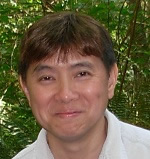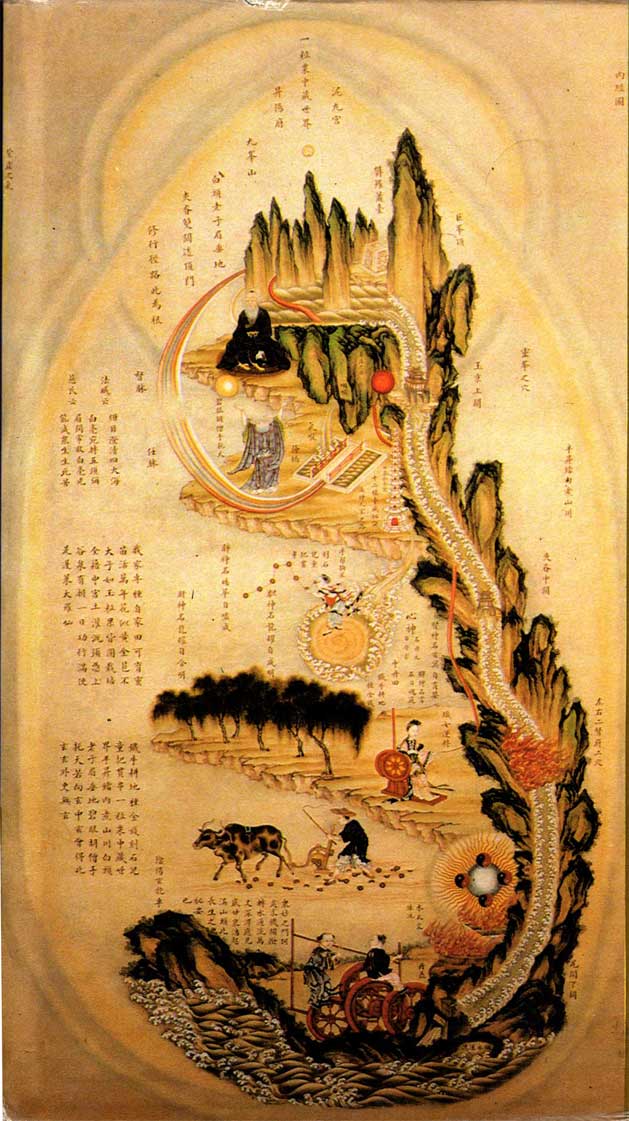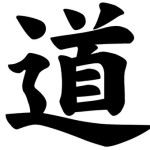 Guidance from my teacher’s teacher, Dr. Jeffrey C. Yuen, an 88th generation Taoist priest from the Jade Purity School, Lao Tzu sect, and a 26th generation priest of the Complete Reality School, Dragon Gate sect.
Guidance from my teacher’s teacher, Dr. Jeffrey C. Yuen, an 88th generation Taoist priest from the Jade Purity School, Lao Tzu sect, and a 26th generation priest of the Complete Reality School, Dragon Gate sect.
4 Stages of Daoist Meditation:
1. Relaxation of the body: The physical body, muscles, bones, fluids etc, find a way to settle down so that sensations do not become a distraction. (Sthira sukham asanam)
2. Concentration: focusing of the mind through various means. Daoism often uses the micro-cosmic orbit to link different parts of the body to each other in circuits of qi/energy/prana, integrating front and back, inner and outer, yin and yang.
3. Relaxation of mental body/mind. The concentration practice can create its own form of mental tension through the challenge of harnessing the mental energy. It may feel like work! Create an ‘inner smile’ so you enjoy the practice. This becomes concentration without distraction, while relaxed.
4. Lightness of spirit. The final stage is a feeling of levitation or lightness, as spirit is freed up from entanglements.
1. Shen: reconnecting back with my ancestry to learn and have respect for the gift of life that has been passed along to me. This is the early reference to the divine, the source of all life.
2. Xian: Life or existence always arises in a duality known as yin and yang, or as Patanjali would say, the dvandvas, the pairs of opposite. One of the things we do as humans is to take the natural order of duality, of yin and yang, and divide the world into good and bad. This is of course the exact same action described by the second skandha we have been discussing in our Buddhist teachings.
3. Ming: Is about our lives and the choices we make in this dualistic world. The human being has paradoxically both free will and pre-destiny. We are born into a given body, in a given social climate, at a given historical moment, at a specific place on this planet. Without getting into the subtle realms of karma, as humans we have to face the world as it is presented to us. Deep reflection here shows that all human experience has its ups and downs, good days and bad days. This is the natural cyclical view of Daoism, but we often, as mentioned previously, get entangled in chasing after ‘good’ and running away from ‘bad’. This is not necessary. Alan Watts, in his last book “The Watercourse Way” tells the story of a farmer to illustrate this.
This farmer’s horse had run away, and the neighbors all came by to offer condolences for such bad luck. “Maybe” the farmer said. The next morning his horse returned followed by six wild horses, and his neighbors came exclaiming his good fortune. “Maybe”, the farmer said. That day his son broke his leg trying to tame one of the wild horses. “How awful”, said the neighbors when they heard the story. “Maybe” said the farmer. The next day, the local army recruiters came by to conscript his son into the military, but he was rejected because of the broken leg. “How lucky”, said the neighbors. “Maybe” said the farmer.
Our free will comes in regards to how we react to the world. An angry person tends to see an angry world, just as an anxious person tends to see an anxious world. A happy person tends to see a happy world and a loving person tends to see a loving world. In other words, we have the opportunity to make the best of the world we have been given, not that this is in any way easy. In the chapter 2, verse 48 of the Bhagavad Gita, Krishna offers similar advice to Arjuna
yogasthah kuru karmaani sangam tyaktvaa dhananjaya
siddhyasiddhyoh samo bhuutvaa samatvam yoga ucyate
Remaining steadfast in yoga, oh Dhananjaya (Arjuna), perform actions, abandoning attachment, remaining the same to success and failure alike. This evenness of mind is called yoga.
This steadfastness or samatvam comes from reflection and the disciplined cultivation of your own personal principles for living. In Daoism, as in yoga, you yourself reflect upon your life and the world around you and use your own insights for self discovery. It is not a belief system that you ‘buy into’.
4. The Dao: The Way: with reflection, mediation, observation of life, we discover our own connection to shen, the divinity, we can reconcile our behaviors, and begin to live our lives in harmony with all, moment to moment. It is self cultivation.
The Five Roots, or Lessons for Humanity
(From Chinese Herbal Medicine, these are literally roots that carry lessons as well as herbal support for humans. The homonym shen, although written as a different character, is used to describe the plant aspect, that points back to shen as spirit. )
Sha Shen: Life is impermanent. Trying to grasp sand is futile, as is trying to grasp at life. Let if flow through you. Appreciate the impermanence as something beautiful and delicate, so you can be totally present and appreciate what is happening in this moment.
Ku Shen: Bitterness: Life the root ku, life can have its bitter moments. All part of the nature of things. We have conflicts and challenges, but these allow us to grow. If life was always simple and easy, we would never learn anything. Also, we learn that those who may cause us conflict are also Divine, so we learn to suffer together.
Ren Shen: Humility: We are being held/ cared for by a much larger presence. The Universe is operating as a vast on-going flow of love and our ‘small selves’. To be human, to be humane, is to be humble as we bow to the Divine, not in fear, but in gratitude for all the little gifts.
Dan Shen: Alchemy: Dan means alchemy, as in the term dantien. Our physical form has spirit as its fundamental nature, but this is often hidden. Alchemy asks how can I redeem, from matter, Spirit, which is immutable, incorruptible. And these can be seen in many small ways on a day to day basis. A smile, a bird song, a flower, the night sky, a leaf falling from a tree. We don’t need large miracles, but only to see the miraculous of life itself. Can we change ourselves such that we know this as a living reality, and not just as a good idea.
Xuan Shen: Ever Desire-less. When we let go of our thoughts, beliefs and desires, we begin to see the mystery. As we humans we often think that we can conjure up the divine through ideas and beliefs, in our own images and desires. But ultimate mystery, the Dao, Truth, is not available to our thoughts. It is in awe and letting of of our beliefs. This takes a lifetime of practice.
And Now, we return to the Nei Jing Tu, for your cultivation of these aspects of Daoism.
The first set of lines above the image is from just to the right of the lower dantien and describes aspects of the whole picture, the single grain of millet sitting just above the crown chakra (GV-20). The blue eyed foreign monk is said to be Bodhidharma, the Indian monk who brought Buddhism to China. Can you find that inner support? Can you find the other images in the painting, and then inside your own inner sensory world.
The second set of lines is across from the middle dantien and the third, across from the upper dantien. Let your imagination and perception meet. There is much imagery around the organs in Chinese Medicine as well.
The iron ox plows the field where gold coins are sown;
Engraving the stone, the young lad holds a string of cash.
A single grain of millet contains the entire world;
Mountains and streams are decocted in a half-sheng cauldron.
The eyebrows of white headed Lao-tzu hang down to earth,
And the blue-eyed foreign monk holds up the heavens.
Orient yourself towards the mysterious and it is realized-
Outside of this mystery there is no other mystery.
I am properly and attentively cultivating my own field-
Inside there are numerous sprouts that live for ten thousand years.
The flowers resemble yellow gold, their color not uncommon;
the seeds are like jade grain, their fruits perfectly round.
Cultivation completely depends on the earth of the Central Palace.
Irrigation necessarily relies on the spring in the Upper Valley.
The practice is completed suddenly and I attain the great Tao-
I wander carefree over land and water as an immortal of P’eng-lai.
Fa-tsang says: Violet eyes clarify the four great oceans;
the white light pervades Mount Sumeru. (Mt Meru in Sanskrit)
Tz’u-shih (Maitreya Buddha) says:
Between the eyebrows white light constantly emanates.
This can liberate all sentient beings from the suffering of ceaseless incarnations.


